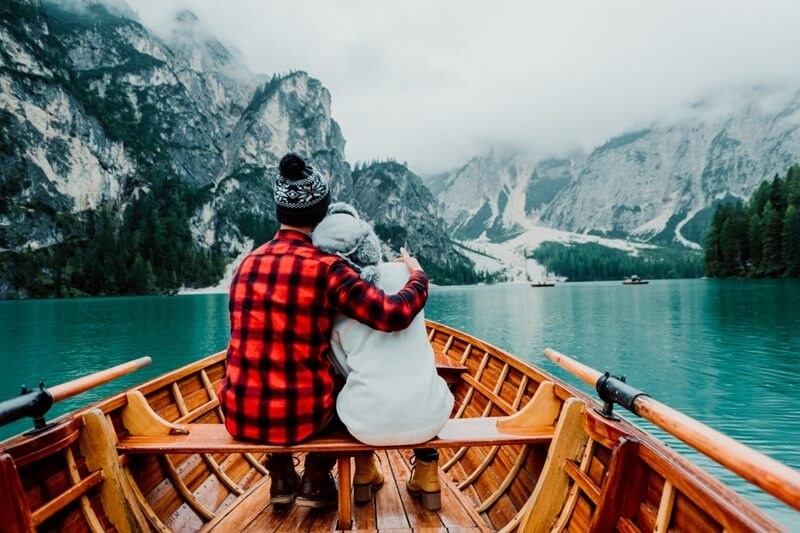
If you're picturing a place where volcanoes smolder under glaciers and waterfalls tumble alongside black-sand beaches, then Iceland is no doubt near the top of your list. However, before getting ready to zip up your parka and lace up those hiking boots, you'll want to ask yourself one fundamental question: When should I visit?
The best time to visit this island nation depends on your travel plans. Whether you're hoping to experience the Northern Lights season in Iceland, hike under the Midnight Sun, unwind in geothermal pools, or visit snow-covered waterfalls, this guide will help you determine the best possible timeframe for your trip.
Let's explore a definitive Iceland travel guide to help you shape your trip around the weather.
Iceland's unique geographical location just below the Arctic Circle has four distinctly different seasons, each providing unique activities, landscapes, and weather conditions. Because Iceland is different from your typical travel destination, visiting in the summer and winter is almost like visiting two other countries.
This means that getting the timing right is the difference between hiking on green moss-covered lava fields and ice-caving in the depths of blue glaciers. Use this article as your Iceland itinerary planner, and enjoy the magic all four seasons offer.
Spring is when Iceland starts to wake from its long winter hibernation. Snow begins to melt in the lowlands, waterfalls swell with meltwater, and migratory birds return. The weather can be unpredictable (sunshine one second, sleet the next), but the extended daylight makes it a great shoulder season to visit.
Highlights:
Best For:
Travellers looking for a bit of winter and summer experience who want to visit before the high-season crowds.
Summer is the optimal travel season in Iceland. You’ll have nearly 24 hours of daylight in June with the Midnight Sun, and therefore, heaps of time to explore! There are endless opportunities for road trips, hiking, and camping.
Highlights:
Best For:
Nature lovers and road trippers hope to allow all of nature to be seen, from waterfalls to active volcanic craters, without snow blocking the paths!

Autumn brings fiery foliage and a crispness to the air. It’s a magical time for photographers, with golden hour stretching long and low. While some roads begin to close and daylight hours decrease, autumn perfectly balances summer’s access and winter’s wonders.
Highlights
Best For
Those hoping to avoid high prices but still experience Iceland’s natural beauty and celestial phenomena.
Winter transforms Iceland into a snowy wonderland. While the cold and limited daylight might seem challenging, the rewards are incredible—ice caves, frozen waterfalls, and the best chance to see the Aurora Borealis.
Highlights
Best For
Adventurers chasing snow, solitude, and the Northern Lights. Just be ready for short days (as few as 4-5 hours of light) and possible road closures.
| Feature | Spring (Mar–May) | Summer (Jun–Aug) | Autumn (Sep–Nov) | Winter (Dec–Feb) |
| Daylight Hours | 10–20 | 16–24 | 8–13 | 4–8 |
| Temperature Range | 0–10°C | 8–15°C | 1–10°C | -5–5°C |
| Crowd Levels | Low–Moderate | High | Moderate | Low |
| Best For | Wildlife, last chance for auroras | Hiking, road trips, and festivals | Fall colors, early auroras | Ice caves, snow, Northern Lights |
| Northern Lights? | Sometimes (early spring) | No | Yes | Yes |
The Northern Lights season in Iceland runs from late September through early April, with peak viewing in mid-winter when the skies are darkest and clearest. To increase your chances:
Winter also offers aurora tours that combine sightseeing with science, including thermal van expeditions and photography workshops.
Summer is your best bet if you dream of trekking through mossy valleys or climbing volcanic peaks. From June through August:
Extended daylight hours also allow for flexible itineraries—you can chase waterfalls at midnight and return for dinner!
Spring and autumn are considered shoulder seasons, offering travelers the best of both worlds:
Use these months for a budget-friendly Iceland itinerary planner without sacrificing experience.
Here's a breakdown of top seasonal activities to help you plan your trip:
Regardless of when you visit, these Iceland travel tips will help you make the most of your Arctic escape:
Planning an Iceland trip can be overwhelming with so much to see and do. Use an Iceland itinerary planner to:
Remember to build flexibility into your itinerary. The weather changes fast in Iceland, and spontaneous detours often lead to the best memories.
While Iceland is a year-round destination, some times may be less ideal depending on your travel style:
However, even in these “off times,” Iceland still offers striking beauty—it requires more preparation.
With knowledge and purpose, you can find the best time to travel to Iceland and plan your perfect Arctic getaway. The land of fire and ice will more than compensate you. Whether you want endless daytime, to dance beneath the northern lights, or to hang out in a far-flung geothermal hot pot, choosing the best season for your desired experience is essential.
Iceland will not follow a one-size-fits-all itinerary, and its seasons are gratifying in very characteristic and distinct ways. So, put on your boots, pack your layers, and plan your Arctic getaway in your time and season!
This content was created by AI